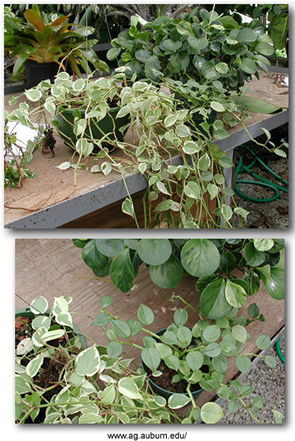Rubber Plant (Ficus elastica)
Plants that Detoxify the Air - Healthy Indoor Plants
⚠️ Safety Around Pets & Children
Low Toxicity: Leaves may contain toxic alkaloids
Skin Irritation: Sticky white sap may irritate skin or stomach if eaten
Precaution: Keep away from pets and children who tend to eat plants

The Rubber Plant (Ficus elastica) has been bred for toughness. It will survive in less light than most plants of its size and will tolerate dim light and cool temperatures. This plant receives high marks in all categories and is an excellent overall houseplant.
🌱 Superior Air Purification: Of all ficus plants tested, the Rubber Plant is the best for removing chemical toxins from indoor environments, especially formaldehyde.
Effective Remover of Air Pollutants
Top-Rated Air Purifier
The Rubber Plant stands out among ficus varieties for its exceptional ability to remove chemical toxins from indoor air. Its specialized focus on formaldehyde removal makes it particularly valuable in homes and offices.
Primary Target Pollutants:
- • Formaldehyde (exceptional removal)
- • Other chemical toxins
- • Indoor air pollutants
Performance Benefits:
- • Excellent in all categories
- • Most valuable houseplant rating
- • Continuous air cleaning
Plant Characteristics
📏 Size & Growth
Indoor Height: 6-10 feet tall or more
Growth Rate: Moderate to fast
Pruning: Can be pruned to reduce size
Support: May need staking when tall
Shape: Can become tall and lanky indoors
🍃 Ornamental Features
Leaves: Glossy, leathery, large
Shape: Oblong to oval
Size: 8-12 inches long
Colors: Dark green, deep maroon, or variegated
Patterns: Yellow, cream, pink, or white markings
Care Instructions
☀️ Light Requirements
Preferred: Bright light
Adaptable: Low light conditions
Best: Morning light from east window
Tolerance: Semi-sun to semi-shade
🌡️ Temperature
Night: 60-65°F (15-18°C)
Day: 75-80°F (24-27°C)
Range: Warm to average room temperature
Tolerance: Cool temperatures
💧 Watering
Method: Water thoroughly
Frequency: Let soil dry somewhat between waterings
Soil: Well-drained houseplant mix
Avoid: Overwatering and standing water
💨 Humidity
Preferred: Humid conditions
Tolerance: Dry air common in homes
Maintenance: Wash leaves when dusty
Benefit: Clean leaves stay healthier
🌱 Fertilizing
Type: Water-soluble houseplant fertilizer
Frequency: Regular during active growth
Low Light: Fertilize less often
Season: Reduce in winter
✂️ Maintenance
Pruning: Spring pruning to rejuvenate
Support: Stake tall plants
Repotting: Late winter/early spring
Cleaning: Wash dusty leaves with water
Common Problems & Solutions
💧 Watering Issues
Overwatering Problems
Root rot from poor drainage or frequent watering
Symptoms: Leaf yellowing, mushy roots
Underwatering Problems
Dry soil conditions
Symptoms: Wilting, leaf drop
🌿 Environmental Issues
Light Problems
Too little light causes leaf loss
Air Quality
Dry air or cold drafts cause leaf drop
Pests
Mealybugs may infest plants
💡 Prevention Tips
- • Use well-draining soil mix to prevent root rot
- • Maintain consistent watering schedule
- • Provide adequate light but avoid direct sun
- • Keep away from cold drafts and heating vents
- • Clean leaves regularly to prevent pest issues
Popular Cultivars
'Decora'
Widely available with dark leaves and creamy white midribs
'Doescheri'
Cream and gray variegated leaves with pink ribs
'Foliis Aureo-marginata'
Features attractive gold-margined leaves
'Robusta'
Very large leaves up to 18 inches long, excellent in low light
'Rubra'
Reddish young leaves maturing to deep green with red edges
'Tricolor'
Green leaves with cream and pink patches
Propagation Methods
✂️ Stem Cuttings
Cut healthy stems and root in water or soil
🌿 Tip Cuttings
Use growing tips for faster propagation
🔄 Air Layering
Advanced technique for larger plants